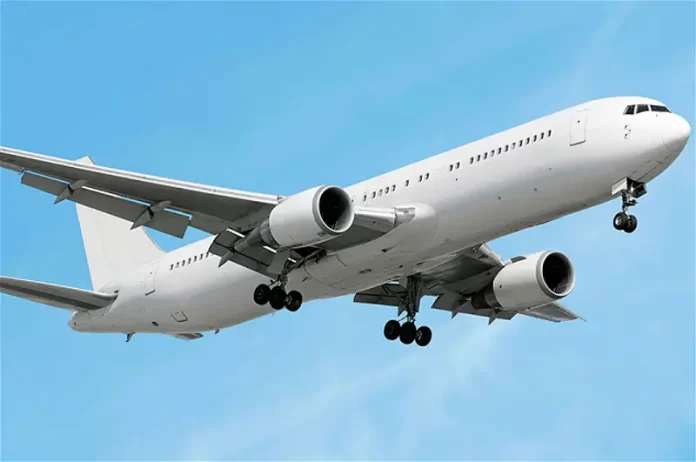Anxiety, confusion, and gridlock over international flight relocation

International travellers and airlines will face pains, gridlock, and discomfort in the coming days as they embark on their outbound and inbound journeys.
This follows the relocation of international airlines and travellers to Lagos’ new international airport, terminal two.
Last month, the Minister of Aviation and Aerospace Development, Festus Keyamo, directed all international airlines to vacate Murtala Muhammed International Airport, MMIA, by October 1, 2023, according to Vanguard.
Keyamo notified the airlines that the relocation of their ticket sales offices to the new terminal two built by the Chinese consortium for the start of renovation work at the MMIA would begin immediately.
The announcement has thus caused chaos for both passengers and airlines, as they struggle to operate in the new terminal, which has far fewer capacity than the current (old) terminal.
One of the causes of the chaos is the new terminal’s inability to accommodate large planes like the Boeing 777 and above, because the jetbridges installed can only accommodate small planes. During a visit to the airport, Aviation World witnessed traffic jams as passengers queued along the taxiway with their luggage, waiting to be called up to check-in.
However, Ibom Air’s Chief Operating Officer, Gearge Uresi, revealed in a chat that the new terminal is nowhere near 14 million passenger capacity. He claimed that the new terminal has far less capacity than the existing (old) terminal. “You don’t just make these things up,” he explained. The ‘old’ terminal, which opened in 1979, was designed to handle 1.5 million passengers per year.
“At maximum capacity, sweating the asset, it would struggle to handle three million passengers.”
“It had a peak hour processing capacity of 1,200 passengers, both departing and arriving.” At peak hour, its service level was designed to provide comfortable processing for 1,200 departing and 1,200 arriving passengers.
“These figures influenced the design of circulation space, check-in counters, lavatory facilities, access and egress doors into and out of the terminal, baggage belt system and arrival carousel specifications (capacity and strength), passenger security screening and customs/immigration capacity, any lifts and escalators, the scope and placement of commercial offerings and, of course, the access and egress road system as well as vehicle parking capacity.”
“Over time, and in the absence of an active Master Plan for improving the airport, throughput began to far exceed the terminal’s processing capacity.”
“In 2012, actual peak hour traffic was 4,100 departing passengers and 4,100 arriving passengers.” In addition, the arrival peak had shifted to a daily 2.5-hour period, while the departure peak had shifted to a daily 3.5-hour period (due to gridlock caused by a lack of adequate processing capacity), stretching the terminal to its limit.
“Every night, the check-in and arrivals carousel areas were a complete mess.”
“To address this while planning for new terminal capacity, we decided to expand the terminal at both ends to create additional processing capacity for customs/immigration as well as security screening for departures and arrivals, including a brand-new set of three high-capacity baggage carousels at each end.”
“Even though this expansion was eventually botched, it came as a huge relief to the terminal.” Otherwise, that terminal would not have survived to the present day.
“At the same time, we briefed the same airport architects who had assisted in the design of Cape Town.”
International’s 15-million-passenger terminal to do the conceptual design for a new, 24-airbridge, modularly expandable international terminal on the left side of the current (old) terminal.
“We took this conceptual design to China Exim Bank, and they thoroughly interrogated and accepted it before approving the facility they were to provide us.”
“However, we began construction on a terminal that was completely different from the one we conceptually designed, in the opposite location from where we were supposed to build it.”
“Unfortunately, in the design of this terminal, every element of basic terminal design was turned on its head.” The fundamental principles that guide terminal design from the ground up are as follows: How many passengers are you designing a terminal for, and for what purpose? Is the terminal being built for international, domestic, or both purposes, and will it serve to facilitate flight connections or only origin and destination traffic?
“These then determine how the key elements are designed in, such as how many contact and remote aircraft stands would be required, as well as the associated circulation space, check in capacity, security screening and customs/immigration capacity, toilet facilities and so on, for optimal processing of the design numbers of passengers at peak.”
“Of course, depending on the airport operator’s requirements, how much commercial offerings and support services such as lounges, etc., would need to be designed in.”
“The design thread runs from Landside to Airside, integrating with the Landside access and egress system, the terminal access and egress doors, and the entire airside manoeuvring system.”
“The design goal is always to provide an efficient, purpose-built infrastructure for optimal processing.” After these considerations have been addressed, ‘aesthetics’ are added to the mix.
“It’s perplexing to see a terminal of this size constructed with a single pier and six connecting stands, a study in terminal design anomaly.” “Their efforts have largely gone unnoticed and unheralded.” The immediate past aviation minister, Hadi Sirika, and the FAAN team invested significant energy, efforts, and resources to overcome the massive problems caused by this incorrectly positioned and poorly designed terminal. But they were commendable.” He went on to say that one thing they got right about the terminal was its modern aesthetics.
“The good news is that the authority currently has a serious and committed managing director, and the airport has a pragmatic General Manager.”
“With the right support and leverage, they will find a way forward to resolve these embarrassing issues.” But, in any case, we should all brace ourselves for a lot of pain. And, by no means, is the terminal capable of handling 14 million passengers. It’s a puzzle for all of us to figure out how to make the best of it.”
The ordeal of travellers
Meanwhile, travellers have expressed their dismay at the situation.
According to one of the passengers who requested anonymity, this is the worst time to fly out of Nigeria.
“The situation at the international airport is chaotic.” So we changed to the new terminal, and this is what happened? These flaws were not taken into account during the planned switch.”
“The pains the passengers are going through are unfortunate,” said Ocheme Oba, General Secretary of the National Union of Air Transport Employees, NUATE. We sometimes direct our frustrations towards vulnerable people as a result of abrupt dislocation from our comfort zones.
“There aren’t any jetbridges.” Aside from the passengers not being transported to and from the aircraft with adequate buses, the new terminal, on paper, should not be the source of these problems.
“It’s facts like these that give me hope that if they pay attention to detail, they’ll be able to overcome the chaos as soon as possible.”
The FG forms a task force.
Meanwhile, Keyamo has formed a task force to address these issues as soon as possible.
In a statement, the Minister’s spokesman, Oluseyi Odutayo, said, “We urge all passengers and other stakeholders to be patient and bear with us as the inconvenience caused will be resolved soon.” Your understanding is critical to making this transition easier for everyone involved.
“The primary goal of this task force is threefold: to resolve passenger concerns as the task force is expected to work diligently towards resolving all passenger concerns regarding congestion, discomfort, and related issues resulting from terminal relocation.” We are committed to making sure that every passenger’s voice is heard and addressed as soon as possible.
“Others will be implemented proactively to minimise discomfort by focusing on minimising any form of discomfort during this transition period, streamlining processes at both terminals while closely monitoring operations 24/7, enhanced signage, dedicated support staff, and improved communication channels.”
“We pledge transparency throughout this process by providing regular updates on progress in addressing airline relocation concerns.” FAAN aims to improve public relations strategies through a variety of channels, including online platforms and customer service helplines, so you can stay up to date on the latest developments.”






It iss iin resality a nife and useful piece of information. I’m glad thjat you shhared
this helpful information ith us. Please stay us up too date lioke this.
Thank youu foor sharing.